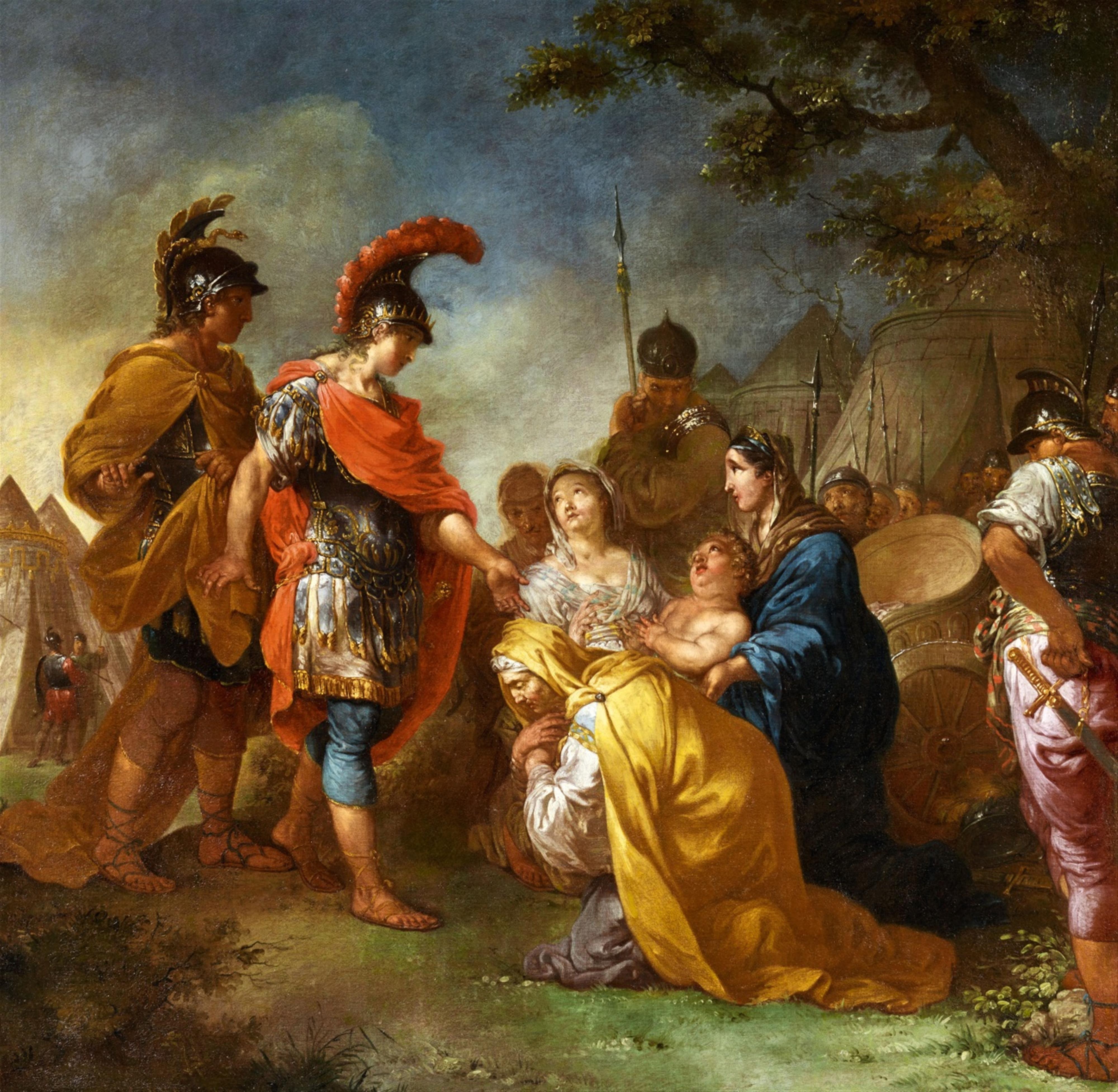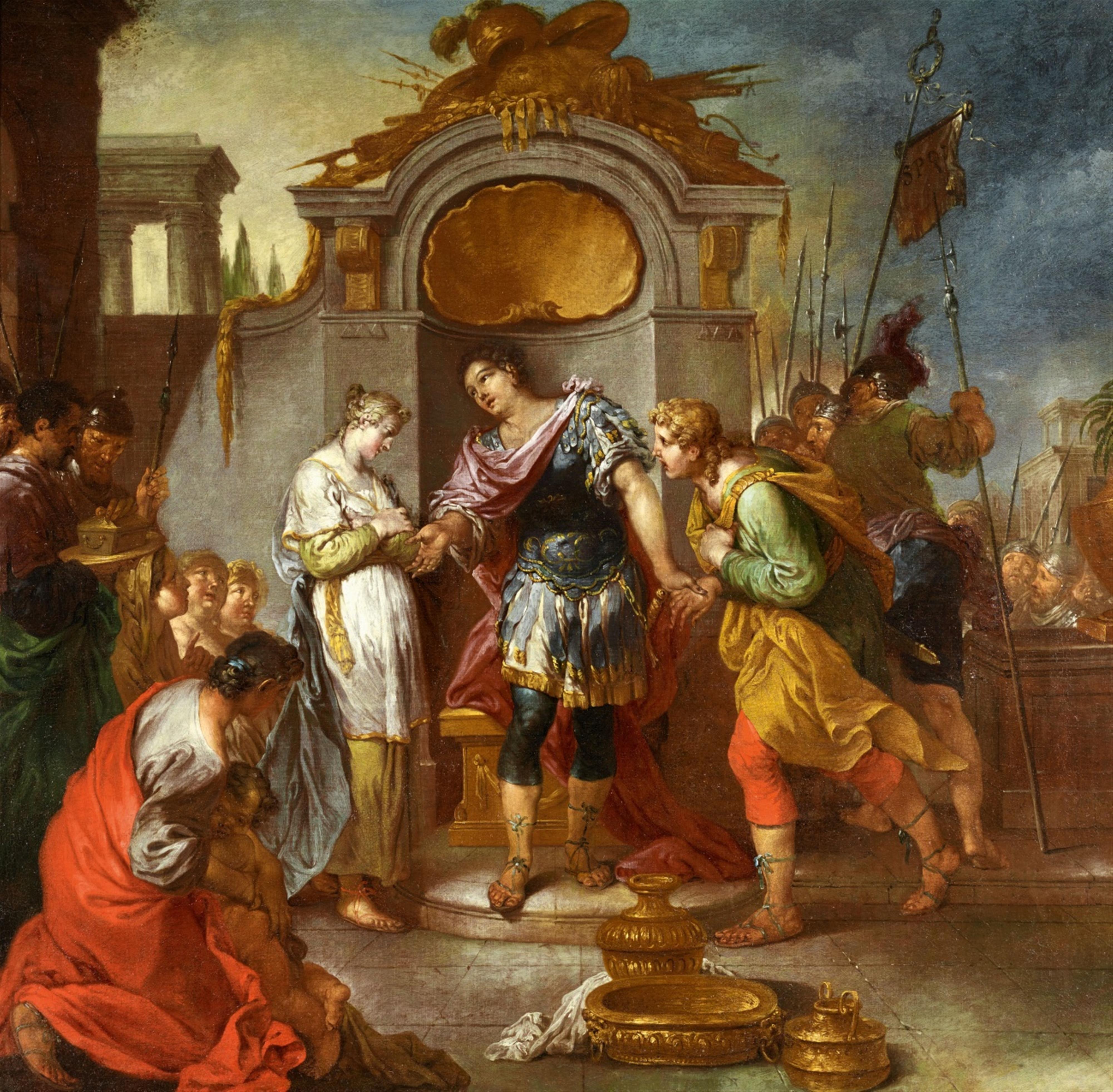Januarius Zick
Alexander the Great and the Family of Darius The Abstinence of Scipio
Oil on canvas. Each 142 x 184 cm.
"Alexander" signed lower centre: Ja: Zick f.
These two large works by Januarius Zick depict stories from Greek and Roman antiquity. “Alexander the Great and the Family of Darius” shows an event recorded by Valerius Maximus, among other authors, as having occurred in the wake of the battle of Issos in 333 BC. Alexander took the family of his opponent Darius III prisoner, but instead of handling his wife, mother and daughters as one would captives, he instead treated them as if they were his guests. When Alexander visited the women in their tent, accompanied by his friend Hephaistion, Darius' mother Sisygambis mistakenly knelt before the latter to beg for mercy. When she was informed of her faux pas and instead turned to Alexander, he pointed to Hephaistion and said that he, too, was named Alexander. Valerius Maximus cites this deliberate disregard of the difference in the two friends' rank as an example of Alexander's humility, as well as his benevolence.
Livius records the story of Scipio's abstinence: After capturing Carthage in the second Punic War, Scipio Africanus received a beautiful young woman as part of the spoils. However, when Scipio learnt that she was already promised to Allucius, he returned his bride to him and gave the young couple her ransom as a dowry.
Januarius Zick often painted subjects from ancient history during his late phase in the 1780s and 1790s. The two works were made for the Elector of Trier, to decorate his residence at Ehrenbreitstein. Zick's choice of motif followed a trend popular in French 18th century art in which the classical anecdotes recorded by historians such as Livius and Valerius Maximus were presented as “exempla virtutis” to illustrate the virtue of the ancient Romans and Greeks. During this late phase, the artist also painted motifs such as “Coriolanus and the Roman Women”, “Cimon and Pero” and Aeneas rescuing his Father Anchises. The French influence is also evident in Zick's use of a composition by Charles Le Brun as the basis for the central figures in “Alexander the Great and the Family of Darius” (Strasser, op. cit. p. 416).
Provenance
Probably Clemens Wenzeslaus of Saxony, Prince-Elector of Trier, Dikaterialbau, Ehrenbreitstein. - The Dr. Unschuld collection, Neuenahr, 1914. - The W. Mayer-Alberti collection, 1920. - Lempertz, Cologne, 12.11.1938, lot 125 and lot 126.
Literature
Adolf Feulner: Die Zick. Deutsche Maler des 18. Jahrhunderts. Munich 1920, p. 61, 100. - Othmar Metzger: Die Bilder von Januarius Zick im Suermondt-Museum. In: Aachener Kunstblätter, XXXV (1968), p. 106 -123, p. 120. - Wolfgang Becker: Paris und die deutsche Malerei. 1750 - 1840. Munich 1971, p. 43, illus. 63. - Othmar Metzger: Entwürfe für Intarsien David Roentgens. In: Pantheon, XXXIX (1981), p. 176-179, p. 178. - Josef Straßer: Januaris Zick (1730-1797). Gemälde – Graphik – Fresken. Munich 1994.
Exhibitions
"Coblenz und Ehrenbretistein vor 100 Jahren", Koblenz 1914, no. 1611 (Alexander the Great and the Family of Darius). - "Januarius Zick, Gemäde und Zeichnungen", Paderborn, 2001, no. 57 & no. 58, illus. 118 & 119.




